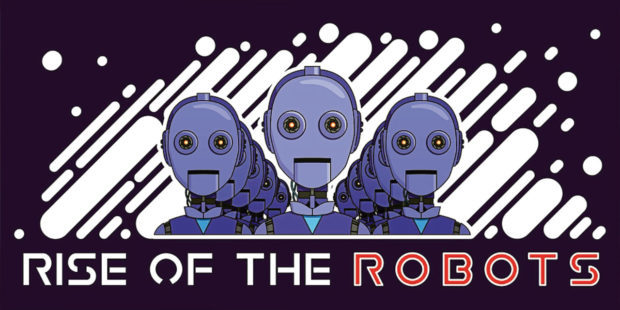The rise of the robots is well and truly under way at businesses across the north and north-east – and in all sorts of workplaces.
Take Macphie, the food ingredient manufacturer based at Glenbervie, near Stonehaven, for example. The food industry may not strike you as an extreme environment, but Macphie has been testing technology to its limit with its robotic innovation.
Its “Arctic” robot – used in temperatures down to -30C (-22F) – helps to produce the cookie dough needed to satisfy European demand for Ben & Jerry’s ice-cream.
This may seem a far cry from the robotic technology cleaning up nuclear sites but it stems from the same aim of protecting the workforce from extreme conditions.
Operations director Neil Freckingham said: “Before we invested in the robot, it was a person working in -30C. If you think what it must have been like working in such extreme cold for extended periods, you can appreciate the warm welcome that was given to the robot on its arrival.”
But this commitment to technology and innovation goes much further than a single robot.
Last year, the firm invested £5million in cutting-edge equipment and an online business system. As well as five robots, advanced mixing and filling devices were installed across sites in Aberdeenshire and north Lanarkshire to improve precision and dexterity in processes that were previously done by hand.
The initial driver was not simply a need for accuracy, Mr Freckingham said, adding: “Three or four years ago, we were experiencing severe problems with recruitment.
“Our location just south of the oil and gas capital of Europe was not working in our favour and robots were seen as a solution.
“It was borne out of necessity, to fill vacancies, but then we realised that there was a significant benefit to our workforce and it was the right thing to do.”
More than 30% of food and drink sector injuries reported to the Health and Safety Executive are related to manual handling procedures. There are about 1,700 of these cases, including back injuries, every year in the UK
Macphie realised that reducing manual handling was not only adding “right first time” accuracy but also guarding against the risk of injury to its workforce.
Mr Freckingham said: “Some of the investment in technology was to automate filling product containers, for example buckets of icing. Now, we have pinpoint weight accuracy but have also reduced the risk of repetitive strain injury in workers.”
Automating some of the more mundane tasks and giving workers the chance to learn new skills has reaped other benefits for the company.
Mr Freckingham said: “Our investment in technology is not to decrease headcount – it’s an investment in people. No one at Macphie has lost their job to a robot.”
With £3million investment planned in the coming year to help the business grow further, Macphie is looking at introducing more automation.
“When we started out with this project two or three years ago, annual sales were sitting at around £40million,” Mr Freckingham said, adding: “We’re looking at achieving over £60million in the next financial year, so we’re definitely doing something right.”
The firm has also recently hired a new head of operations, Stuart Harrington, who joined the business from drinks giant Diageo.
Dean’s of Huntly is also investing heavily in robots.
Bill Dean, managing director at the shortbread maker, said: “Robotics is a very pertinent topic within the food sector at this time for sure.
“Most food companies are looking at a 30%+ increase in labour cost across a four-year period ending 2020 due to UK Government policies on Living Wage and pension payments.
“The impact of rising labour costs within a short time frame leaves us little option other than to invest in technology in order to remain a sustainable business.
“Sadly, many businesses may not be in a position to make such significant investment in robotics and will struggle to remain viable by 2020.”
Dean’s uses robotics in the final packing stages of the production process.
Mr Dean said: “Our mixing, primary production and baking departments are key areas that help differentiate our brand from others, so these are pretty much ring-fenced in terms of options for us to consider automating.
“Packing lines were easily identified as contributing to our largest labour spend so we put our effort into finding a suitable robotics partner to help come up with a bespoke solution.
“We are past the midway stage of a planned £1.3million investment in robotic packing lines and are now beginning to see the benefits in terms of reduced labour costs, having greatly lowered the number of seasonal employees that we require during key selling periods.
“It’s a fairly big investment for companies to take and requires careful consideration. There are a few horror stories around of companies choosing the wrong technology.”
Dean’s investment is to offset higher labour costs the company was facing over the next few years.
Mr Dean said: “We are forecasting to be much in a similar place with our bottom line performance at that point, which certainly would not be the case if we did nothing.”
A widespread trend towards smaller but more skilled workforces is likely to continue, he said, adding: “We are currently looking at a number of other areas where technology can assist us reduce labour costs in the future.”
